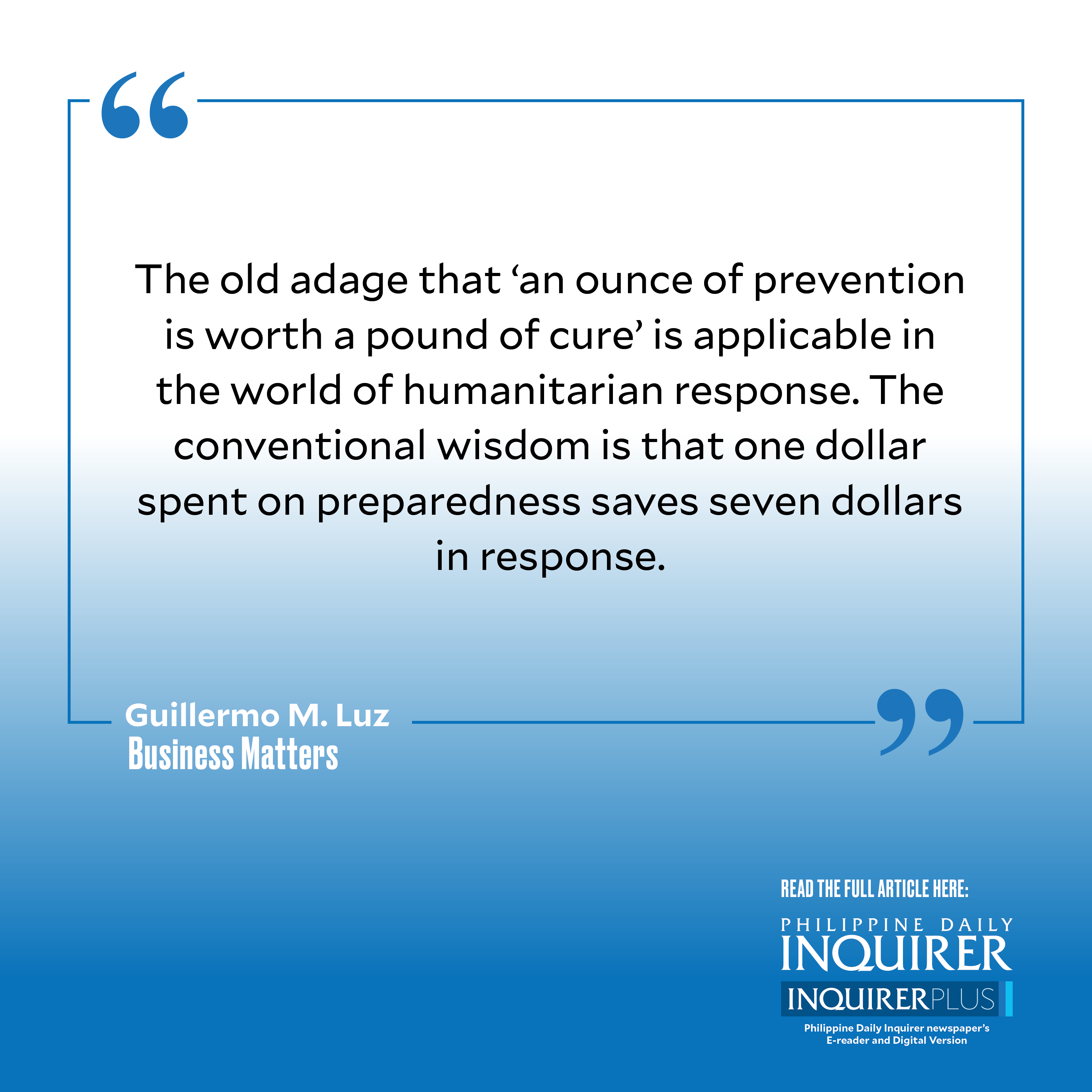Getting airports ready for disaster

At Philippine Disaster Resilience Foundation (PDRF), we put a great value in disaster preparedness, prevention, and mitigation. While we still engage in traditional disaster response (i.e., relief and recovery), one major lesson from Supertyphoon “Yolanda” (international name: Haiyan) 10 years ago was that we needed to prepare our airports for large-scale response efforts.
The old adage that “an ounce of prevention is worth a pound of cure” is applicable in the world of humanitarian response. The conventional wisdom is that one dollar spent on preparedness saves seven dollars in response.
PDRF engages in a variety of disaster preparedness programs and one of them is known as “Getting Airports Ready for Disaster” (GARD). When Yolanda hit the Philippines in 2013, it made landfall in Guiuan, Samar, and knocked the Tacloban Airport temporarily out of commission. With the Daniel Z. Romualdez International Airport down, air cargo and passenger traffic had to be run through the Mactan-Cebu International Airport, the nearest large airport to the disaster-affected area. From there, goods needed to be transferred while humanitarian response workers had to connect through to get into affected areas in Leyte and Samar. The result was that passenger and cargo volume at Mactan-Cebu spiked well beyond their average volumes, causing challenges for that airport.
GARD is an international program run by the United Nations Development Programme (UNDP), DeutschePost DHL Group, and Airports Council International to help airports prepare for such an event. Typically, when a natural disaster strikes (either a typhoon or earthquake), cargo and passenger traffic can jump up to three or four times its daily average during the period that a response is taking place. This is partly because of the inbound humanitarian cargo and equipment which are flown in as an international call for help is made. Humanitarian workers and early responders also need to fly in to manage the cargo and equipment which forms part of their response package.
At the same time, local residents and international tourists may be evacuating the scene and rebooking early flights out as they seek to get to safer ground. The resulting surge in inbound and outbound traffic may also create congestion in the air surrounding airports and cause aircraft to hold their flight patterns as air traffic controllers queue them up for landings and take-offs. This combination of congestion on the ground and in the air is out of the ordinary and requires some specialized training and preparation. This involves not only the airport staff but support civilian and uniformed services such as customs, immigration, local police, and armed forces, as well as cargo handlers and airlines. All must work in concert to ensure that an airport can run as smoothly as possible in such emergency situations. Smooth passage of humanitarian cargo and responders through an airport and to disaster-stricken sites is critical for saving lives.
The GARD program has been running since 2009 and has worked in about 60 airports around the world. This multiday workshop brings together key airport staff, local authorities, and local humanitarian organizations onsite at an airport working with experts from the DHL Group and UNDP. PDRF works as a local partner to organize GARD workshops in selected airports around the country. Several years ago, we worked with UNDP and the DHL Group to organize these workshops in five airports across the country. Why five? Our thinking was that we needed to be prepared in several airports, especially in case one of the airports we worked on was directly impacted by a supertyphoon or an earthquake. We also wanted to make sure that any of these five airports could service any part of the country should the inevitable disaster strike.Unfortunately, when COVID struck in 2020, travel lockdowns prevented us from pushing through with the plan. However, as soon as COVID waned, we renewed contact with each other and pursued this program aggressively. So far, since the second half of 2022, we have completed training workshops in the new Clark International Airport and Laguindingan (Cagayan de Oro) International Airport. The initial workshops at each airport will be followed by additional drills and consultations up to one year after the first workshop.
Our next target airports are Mactan-Cebu, Ninoy Aquino International Airport, and Iloilo airports for the balance of this year and next. We are confident that such preparations will help create a more disaster resilient Philippines.
—————-
Guillermo M. Luz is chief resilience officer of the Philippine Disaster Resilience Foundation (pdrf.org).
—————-
Business Matters is a project of the Makati Business Club (makatibusinessclub@mbc.com.ph).




















